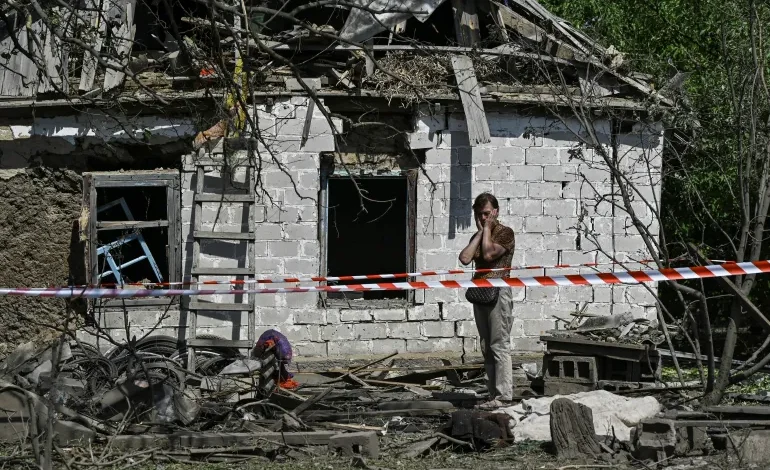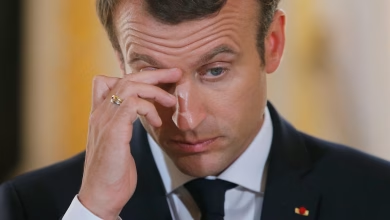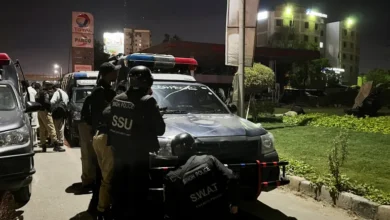‘Putin is vindictive’: Russia pounds Ukraine as Kyiv pursues Kursk assault

Russia’s aerial attack on Ukraine was colossal.
Moving in waves from several directions and at different speeds and heights, 127 missiles and 109 drones attacked 15 of Ukraine’s 24 regions.
The attack is being seen in Ukraine as Russian President Vladimir Putin’s revenge for Kyiv’s daring incursion into the western Russian region of Kursk that began in early August and has resulted in the apparent takeover of more than 1,000sq kilometres (386sq miles).
“He is a vindictive person, he got offended,” General Lieutenant Ihor Romanenko, ex-deputy head of the General Staff of Ukraine’s Armed Forces, told Al Jazeera.
The attack began in predawn darkness on Monday as buzzing swarms of explosives-laden heavy drones took off from the Azov Sea town of Yeisk in southwestern Russia.
Then the Kinzhal (Dagger) ballistic missiles whizzed away from under the wings of MiG 31 fighter jets stationed in the western Russian town of Lipetsk.
The Kinzhals can manoeuvre in-flight and speed up to a breathtaking 4km (2.5 miles) per second – half the speed a rocket needs to reach outer space.
Heavy Tu-95 bombers in the Volgograd region launched Kh-101 missiles, the type that had hit Ukraine’s largest children’s hospital in July.
Despite their subsonic speed, Kh-101s are hard to intercept as they can fly only 50 metres (164 feet) above ground and zigzag on their way to their targets.
Ballistic Iskander missiles were shot off from the western Voronezh region and annexed Crimea.
‘This attack, it was bigger than usual’
The wail of air raid sirens woke up Anatoly Dmitruk, a railway maintenance worker, despite the wax ear plugs he shoves into his ears every night.
But he went to sleep “a couple of times” before air defence systems filled the air with deafening booms while shooting down the missiles and drones.
He checked the Radar Ukraine Telegram channel to see the attack’s scope – and got up from his bed to sit in the corridor following the “be between two walls” rule he learned when Russia’s full-scale invasion began in 2022.
That was when his wife and 17-year-old son Arseniy left Ukraine – first to ex-Soviet Moldova and then to the western German city of Dusseldorf.
The explosions stopped before 8am. The air raid alert rang on for another three hours.
For Dmitruk, the alert’s unprecedented duration had a silver lining.
The burly 39-year-old lives in a two-bedroom apartment in eastern Kyiv, and his only way to work is the subway that straddles the 700-metre-long (2,297-foot-long) Metro bridge above the Dnipro River and stops working during alerts.
“So, I went back to sleep and then had a lovely morning at home,” Dmitruk said.
Asked whether he was frightened, he shrugged with an indifferent “meh”. Putin, he added, has gone “cuckoo”.
Feelings of anxiety have dulled after hundreds of air raid alerts in Kyiv since 2022, a Ukrainian psychologist said.
“The anxiety ahead of new shelling is a routine emotional background for millions of Ukrainians,” Svitlana Chunikhina, vice president of the Association of Political Psychologists, a group in Kyiv, told Al Jazeera.
On the one hand, they adapted to the threats and made their safety practices routine hiding in a shelter, between two walls or in a subway station, she said.
But on the other hand, the stress is accumulating, becoming chronic, and its destructive consequences can manifest themselves years later, she said.
However, Moscow’s aerial attacks failed to reach its main objective of “reaching the threshold” of patience of the Ukrainian public and politicians, she said.










